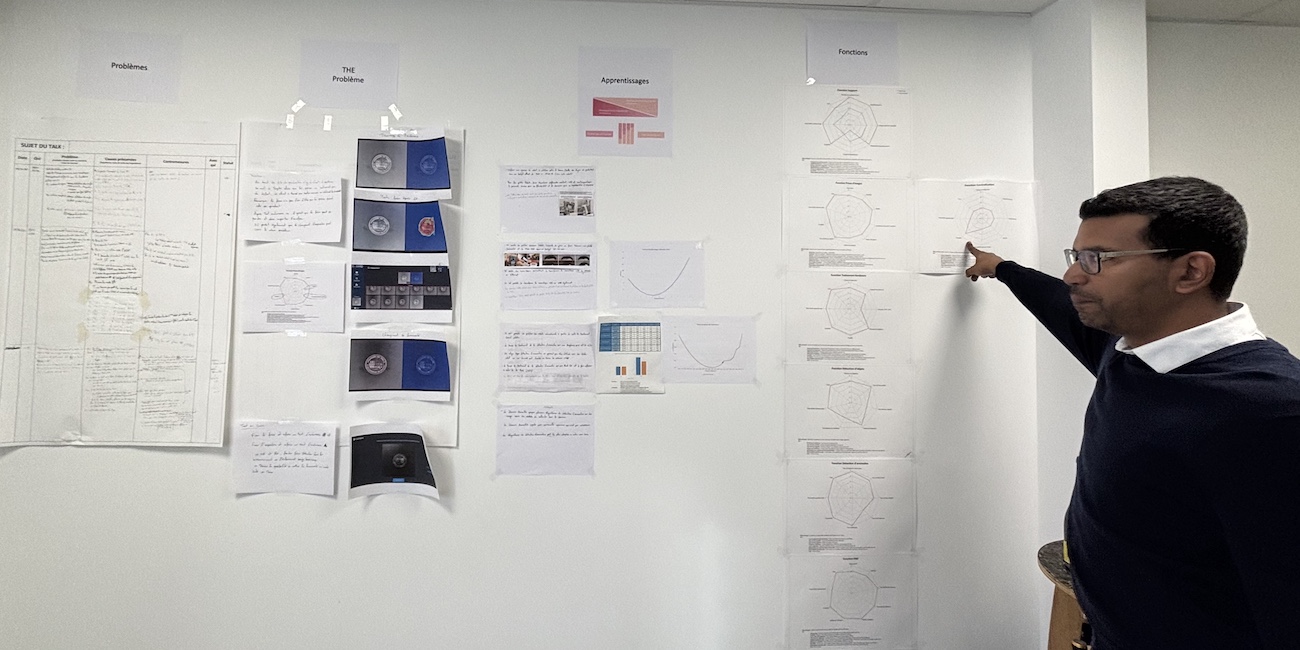
Beyond exploitation - an alternative business system
FEATURE – The transformational power of Lean Thinking allows us to see it as a way to solve some of the world’s biggest problems. Dan Jones explains why it can represent an alternative to our exploitation-based system.
Words: Daniel T Jones, Co-Founder of the Lean Movement.
Some events have the power to change how we see the world. In recent weeks, the tragic murder of George Floyd in Minneapolis has galvanized the Black Lives Matter movement, with protests erupting all across planet. Here in the UK, demonstrators have tossed the statue of slave-trader and benefactor Edward Colston into Bristol harbor in a symbolic, powerful gesture.
These events have shone the spotlight on how the industrial revolution in Britain, and later in the United States, was built on the profits from the slave trade and the plantations the slaves worked in. The British came late to the Atlantic slave trade, but they “industrialized” it and ended up shipping 11 million people to the Caribbean and the then American colonies (later the Confederate States of America) from Africa before slave trade was outlawed in the British Empire in 1807. Slavery was only finally outlawed in the Caribbean in 1838 and in 1865 in the United States.
One-hundred-and-fifty-five years later, we are still living with the false myths about black people that were created by those who fought to stop the abolition of slavery.
Around that same time, the British East India Company raised a private army twice the size of the British army to overrun the collapsing Mughal empire and eventually turn India into the highly profitable “Jewel in the Crown” of the Empire by 1803. This was a key step towards creating the protected imperial market for goods and services that Britain benefited from until World War 2.
You might wonder why I am talking about this. What can we learn from these stories today? Are they just of historic interest? One thing is clear: they are about exploitation of human beings, of resources, and of markets. But is this not true of every era? And of economic and business life in general? Perhaps, but that doesn’t mean that exploitation should still be a model for business in our rapidly changing world. It’s about time we looked for an alternative.
Exploitation has never really disappeared from the treatment of labor. Sure, it has changed a lot since the days of slavery, for instance through the dark satanic mills of the Industrial Revolution or Henry Ford’s decision to double wages and instate the 8-hour day to steady jobs for life in the mass production era. Still, automation, globalization and zero-hours contracts expose the fact that labor is still thought of as a commodity to be disposed of. It is not surprising that employee satisfaction and commitment to their employers has sunk to record lows.
The exploitation of resources and of the knowledge necessary to process and use them has been central driver of modern economies – from sugar, tobacco and cotton from the plantations to steel, coal and oil and then to computers, medicines and Artificial Intelligence today. For a long time, businesses could largely ignore the externalities of their actions, which were left to governments to deal with. However, the world is now reaching finite limits that are forcing us to limit carbon emissions to slow down climate change, tackle growing levels of pollution in the air, land and seas and ensure the health of the natural world on which we all depend.
Controlling and exploiting markets laid the foundations for modern business. Examples include the British government granting monopoly trading rights to the East India Company, including prohibiting Indian workshops from designing and building railway engines to compete with engines built in Britain, and the anti-trust laws introduced in the US in1860 and 1914 to curb the dominance of the oil, railway and steel barons. In more recent times, we have seen governments struggling to resist the well-funded lobbying of tech giants. (Their exploitation is more subtle and invisible, as their power and profits derive from algorithms driving the social media feeds of their users.)
So, can something be done about this? Remedial actions – like tougher anti-trust regulation of the tech giants, redistributive taxes to address growing inequalities and determined global collaboration to tackle climate change - would make a significant difference. But they are unlikely to be sufficient, because they rely on businesses and non-profit organizations to deliver the actions on the ground, for and with their customers and local communities. I believe that the prevailing business model is no longer fit for purpose when it comes to responding to these challenges.
LEAN AS AN ALTERNATIVE
The business model for the mass-production age, developed in the 1930s by Alfred Sloan at General Motors, was built to manage departmental performance “by the numbers” achieved by means of “commands” from the top and “control” exerted through the allocation of resources. The influential economist Milton Friedman later declaimed that the sole focus of business should be “making profits”.
This American “shareholder-first” business model led executives at companies like GE to increasingly focus on profits from financial transactions rather than making products. It led others to become more dependent on lenders as they borrowed large sums to fund share buy-backs, to boost their share price and executive compensation. This profit focus constrains their ability to do the right things to respond to the challenges we are facing today.
Fortunately, there is a well proven alternative we can learn from: lean business system, which evolved at Toyota over the last 60 years. Toyota showed that superior profits come from consistently providing users with better and affordable products and services that help them meet their needs and requirements better than the competition and to continuously improve them as these needs change. This unwavering commitment to closely observing users rather than relying on sophisticated marketing to persuade them lays the foundation for exploring innovative new ways to help them, rather than protecting legacy products and assets.
What makes this possible is treating employees with respect, mobilizing everyone in teams to continuously improve their work in return for a commitment to develop their capabilities. Leaders articulate the performance gaps to be closed, guide projects to do so, and create a culture of learning. Growing experience in problem solving creates dynamic performance gains, streamlines waste-free processes, creates the ability to respond to changes in demand and the knowledge to successfully introduce new enabling technology.
Toyota also set an example in the industry by taking responsibility for its impact on the environment and society, leading the way in the development of alternative technologies like hybrid and hydrogen fuel-cells (and now as a mobility service provider). It also has the most comprehensive environmental program to achieve zero carbon emissions in its production, supply chains and distribution and through the product life cycle, as well as minimizing water use and pollution and relying on sustainable resources.
The reason Toyota was able to follow this different path and to continue to do the right things as the world changes is its resilience. From the beginning, they resisted pressure from the Japanese government to license technology from foreign automakers in favor of developing their own. And after nearly going bankrupt, they decided not to rely on bank lending and build sufficient reserves to respond to shocks and new challenges. They later had the courage to lead the industry in developing alternatives to petrol and diesel engines.
Profit-driven exploitation was never the strategic focus for Toyota’s leaders. Because of their resilience, they could instead focus on anticipating and meeting the needs and requirements of their customers and society, on building the capabilities to do so by engaging and respecting all their employees while taking responsibility for the sustainable use of resources.
Recognizing and committing to ambitious goals for customer trust, employee respect and carbon footprint as well as profitability, debt levels and investment requirements is a big step. But tracking the progress made along the paths to achieving these goals is even more important. The goals themselves will evolve with changing circumstances, and the ability to improve is key to delivering on these volatile goals – for customers, employees and society at large.
THE AUTHOR

Read more



THE LEAN BAKERY – In the last episode of our video series, we learn how 365 is using an impressive visual management system to manage the accounting and human resources functions.


CASE STUDY – This French firm transformed its engineering approach through continuous learning, radical redesign, and user-driven innovation, evolving into a lean, resilient company with a strong culture of development.


FEATURE – The introduction of a new process can be disruptive to an organization’s improvement efforts. But what if the process were designed to be lean from the start?



INTERVIEW – At the recent European Lean Summit, we sat down with a senior executive from Fiat Chrysler Automobiles to learn more about the company’s World Class Manufacturing approach.

